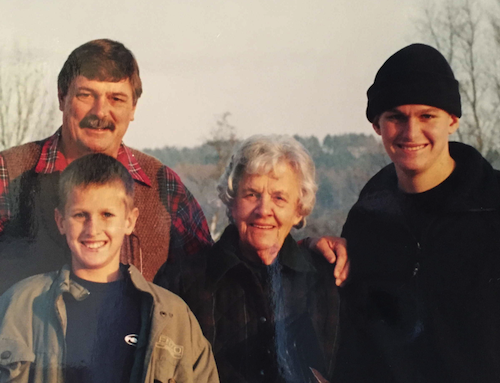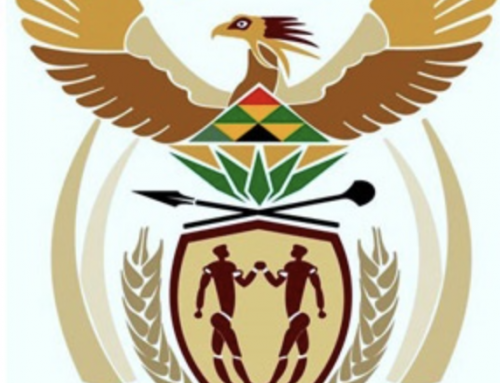Below is a list of Frequently Asked Questions for anyone researching their family history in South Africa.
 Is there a National Index to search for births, marriages and deaths certificates in South Africa ?
Is there a National Index to search for births, marriages and deaths certificates in South Africa ?
No – you can, however, search for death notices, and deceased estates from 1830 until approx 1975 on the National Archives website. If they are not there, contact me and for a small fee, I will find them for you.
When did adoptions officially start in South Africa?
As South Africa was under Roman-Dutch Law it did not recognize adoption as a means of creating the legal relationship of a parent and child until 1923 and the case of Robb versus Mealey in 1899, provides insight into disputes on legal inheritance claimed by an adopted child.
Adoptions were officially promulgated on the 6th Feb 1923 when the “Adoption of Children Act 1923” commenced and was published in the Government Gazette. Anyone looking for an adoption record will not find anything officially until 1923.
What does Ex Parte Application mean?
An ex parte application is an application by one side when the other is not, does not need to be, present in court. An ex parte application is brought without notice to the other side and is sought in cases where there is fear that notice might result in destruction or concealment of documentation.
What does Illiquid Case mean?
An illiquid case is a court action where there is no monetary claim or the amount of the monetary claim is not pre-determined or easily calculated. A divorce is often an illiquid case. Often in a divorce settlement, one party will receive mostly illiquid assets, including the home, while the other party receives liquid assets such as retirement plans, etc…
Where do I find birth, marriage and death certificates?
For these certificates you will need to apply to the Department of Home Affairs.
The Department of Home Affairs is the official holding office for South African births, marriages and deaths. Applications should be lodged at your nearest Home Affairs office if applying from within South Africa. If living abroad, you should contact the nearest South African Embassy, Consulate or High Commission. Always request a full, unabridged vault copy.
There is no public access at all to the birth, marriages and death registers or indices held at the Department of Home Affairs.
Below is a table for commencing dates for the registration of births, marriages and deaths in the various old provinces:
[table id=2 /]
There is, however, an alternative method of accessing civil birth, marriage and death registration records.
Older records from the Home Affairs offices of the Eastern and Western Cape as late as the 1970’s do exist in the various archives, such as the Cape Town Archives under the reference HAWC (Home Affairs Western Cape) and HAEC (Home Affairs Eastern Cape).
It must be noted that there is no access to births from these archival repositories for 100 years and for marriages and deaths for 20 years. Although these records can be consulted here, official certificates cannot be issued here, nor can they be photocopied.
Tips for contacting the Department of Home Affairs:
Expect delays, as they are very understaffed.
Take down the details of any person you deal with at this department.
If an ID number is supplied for the person whose certificate you wish to obtain, it will speed up the process.
Average waiting time is three months.
There is a charge
Are their Census Returns for South Africa?
Yes, but they are purely statistical and are destroyed. This means there is no Census Record that gives any information on ages, names or places.
Blue books and statistical Registers – part of the archives of the Colonial Office (CO) – are also in the Cape Town Archives and cover the years 1821-1889.
“Opgaafrollen” were used for tax purposes in the Cape and cover the period 1692 – 1845.
In the Orange Free State census reports were taken over different years, the first being 31 March 1880, then 1890 and finally 17 April 1904. These reports only have statistical information on birthplaces, ages, education, religions, occupations and illnesses of the province’s citizens. No other information is given.
Old voters’ rolls, some of which go back to 1876 in the Cape, also include the years 1884, 1888, 1889, 1893, 1895, 1896, 1897, 1898, 1899, 1900 and 1907. These records give varying degrees of information depending on the areas and the years. Generally they only have surnames, first names, occupations and places of residence. These and later voters’ rolls can be consulted in the various Archival Repositories in the reference rooms. They are not available on the National Archives website.
If there are no census records, where do I find the most information?
The most comprehensive document with information is the death notice. (The death notice should not be confused with a death certificate, which is a medical certificate.)
Estate papers and church records for deceased people also hold large amounts of information.
What is a Death Notice?
 A Death Notice was introduced 1834 and is the official documentation handed to the Master of the High Court whose office has jurisdiction over the estate. If there is no estate there is generally a death notice but not always – the reason for many death notices thought to be missing in the archives is a mystery for most people. It is used for informing the Master whether the deceased had assets, property or possessions to be passed on to heirs or claimants such as creditors, providing names of potential heirs, supplying the Master with details of where the deceased resided at the time of death and informing the Master whether the person reporting on the death is qualified to do so.
A Death Notice was introduced 1834 and is the official documentation handed to the Master of the High Court whose office has jurisdiction over the estate. If there is no estate there is generally a death notice but not always – the reason for many death notices thought to be missing in the archives is a mystery for most people. It is used for informing the Master whether the deceased had assets, property or possessions to be passed on to heirs or claimants such as creditors, providing names of potential heirs, supplying the Master with details of where the deceased resided at the time of death and informing the Master whether the person reporting on the death is qualified to do so.
Death Notices can be searched for on the National Archives website here.
The Death Notice contains fields for the following information:
Surname of deceased
Full first names
Place of birth
Names of parents of deceased (state whether parents alive or deceased).
(a) Father of deceased
(b) Mother of deceased
Identity number
Nationality
Occupation
Ordinary place(s) of residence during the 12 months prior to death and the Province(s).
Date of birth (only modern death notices – post 1960’s)
Marital status at time of death
If married, place where married
Full names of surviving spouse and his/her occupation
State whether marriage was in or out of community of property/whether accrual system is applicable
(a) Name(s) of predeceased spouse(s) and/or divorced spouse(s) (state opposite name of each whether predeceased or divorced)
(b) Date of death of predeceased spouse(s)
Master’s office(s) where predeceased’s estate(s) is/are registered and number(s) of estate(s), if available.
Date of death
Place of death
Full names of children of deceased (state whether major or minor or predeceased and in the latter event, whether they left issue and, if that be the case, the full names of such issue) Also if the deceased was married more than once it should state who the children’s parents are
Has the deceased left a will?
Name and address of person signing the death notice.
Dated at ……. the ……. day
Signature ………….
Capacity………………
One must bear in mind that when a person dies, the family is distraught and one of the members of the family will normally be the person filling in the Death Notice. Expect errors in the information given.
If a child has died before his/her parents, for instance, the child may not always be listed. The same applies if the deceased has been married more than once: the first spouse is sometimes omitted. If a neighbour or friend filled in the form, they would not necessarily know who the deceased’s parents were, but sometimes guess. Sometimes the death notice states a female’s surname as her maiden name, even though she is married. People also lie about their ages or sometimes do not know when and where they were born.
Please remember that a death notice could either be perfect, semi-perfect or a complete hoax and could send you on the wrong trail in tracing your ancestors. Make sure that you have other resources to complement and verify this information.
What is a death certificate?
The Death certificate which should not be confused with the Death Notice and should always be completed by a person who legally competent to certify the death. This is normally done by a doctor.
Burial or cremation cannot take place without this document.
This certificate is a civil document and is sent to Department of Home Affairs. Older certificates are now housed in the National Archives in their respective Provinces. Modern day death certificates need to be obtained either from the Department of Home Affairs or in the later deceased estate files a copy is normally included within.
Death certificate will give the following information: Deceased persons ID number, Surname, First Names, date of birth, sex, marital status, date of death, place of death and cause of death. This information is dependent on how old the certificate is. Older ones will not have ID numbers on them but will have race instead.
What is NAAIRS?
NAAIRS (pronounce like “stairs”) is one of the most powerful research tools used in South African genealogy. Managed by the National Archives Repository in South Africa, the National Automated Archival Retrieval System provides a search facility to all the main repositories associated with the Archives.
Here you will be able to search for death notices, estate papers, wills, adoption papers, legal documents, coats of arms and much more. You will only, however, be able to see a set of reference numbers and a brief description of the documents concerned. You cannot view or order these documents, but will either have to write to the archives concerned, taking with you the reference numbers relating to the documents you require, or go in person.
My ancestors arrived by ship and I cannot find their names on the passenger lists. How do I go about tracing them?
There is and was no official index or Government record for passengers travelling by sea or by air; nor was there any passport control in South Africa until the 1900’s.
Generally only first and second-class passengers were recorded. Only initials and surnames were used most of the time. The rest of the passengers were not listed. Only the number of passengers would then be given. Passenger lists were published in both daily local newspapers in the town in which the people either arrived or departed, or in the local Government Gazette.
Where can I find my ancestor’s will?
When and where a person died will determine where the will is housed. Wills will either be in the National Archives or with the Master of the Supreme Court.
Estate Papers dating from before the dates below will be found in the Archives. Those dating from after these dates will be found in the following Master’s Office in the towns concerned.
Cape Town 1964
Grahamstown 1962
Kwazulu-Natal 1975
Transvaal 1978
Orange Free State 1951
Kimberley 1957
*NB Remember that not every person had a will.
To obtain a copy of a will, you will need write to the Master’s Office at Private Bag X81, Pretoria, 0001 – or contact me and I can order copies for your for a fee
Are there any divorce records available?
Yes. Old divorce cases dating back more than 50 years are available in the National Archives repository. These documents are called “illiquid cases” – generally a copy of the marriage certificate is included.
What will I find in Divorce Papers?
You should find correspondence between the plaintiff and the applicant on the grounds of their divorce. Children’s names are generally not mentioned but their ages are. Normally you will also find a copy of the marriage certificate, and sometimes birth certificates of children to prove their paternity in this folder.
What kind of information can I expect to find in a marriage certificate?
You will only find the husband’s and wife’s names, ages, occupation and place of abode. Unless the bride was under age and needed her parents’ consent, you might only find a clue to a relative’s name.
Where can I obtain a copy of a marriage certificate?
Marriage certificates are available through the Department of Home Affairs. Unless you know the exact magisterial district in which the marriage took place, you can go to the archives in that area and search the inventories for the Home Affairs Office – there is a qualification of access of 20 years. However, most of these records date from before 1970.
I was adopted and want to find my biological parents – where will I find my adoption papers?
Very important – Adoption is a very sensitive issue and it is suggested that all parties involved go for counselling before attempting to apply for adoption papers.
These documents can be applied for at:
The Registrar of Adoptions,
Private Bag X 901,
Pretoria 0001
Tel: +27-3127608.
Older adoption papers of 50 years are housed at the National Archives. Unless you are the adoptive person, you will not be allowed access to this records unless through an attorney or social worker. Read more on adoption
Where do I find church records?
Just like in any other country, church records play an immense part in tracing your ancestors in South Africa.
The earliest records kept in South Africa are those of the Dutch Reformed Church that start in 1660, the Lutheran Church records from 1784, Anglican from 1806, Methodist from 1822 and Catholic from 1820.
Church records are spread all around the country. (Don’t expect to find them in their original parish or place of worship.)
A large proportion of the Anglican Church records are housed at Wits University. Churches from as far a field as the Cape and the Island of St. Helena can also be found there.
Methodist, Presbyterian, Baptist, Catholic, Congregational and Jewish records can be found at the Cory Library in Grahamstown.
The majority of Catholic records are housed either at the original source or the main diocese in the area the church falls under.
Larger churches like St. Georges Cathedral have their records in the Cape Town Archives, but they are very old and fragile, therefore it is recommended that microfilms of these registers held at local libraries belonging to the Church of Jesus Christ of the Latter Day Saints should be used. They also have a web site called Familysearch.org where you can search limited churches in South Africa.
Church records for British persons who were soldiers or in any way affiliated with the army in South Africa can use sources such as St. Georges Cathedral (pre 1900), St. John’s Anglican Church in Wynberg and some of the churches in Simonstown.





